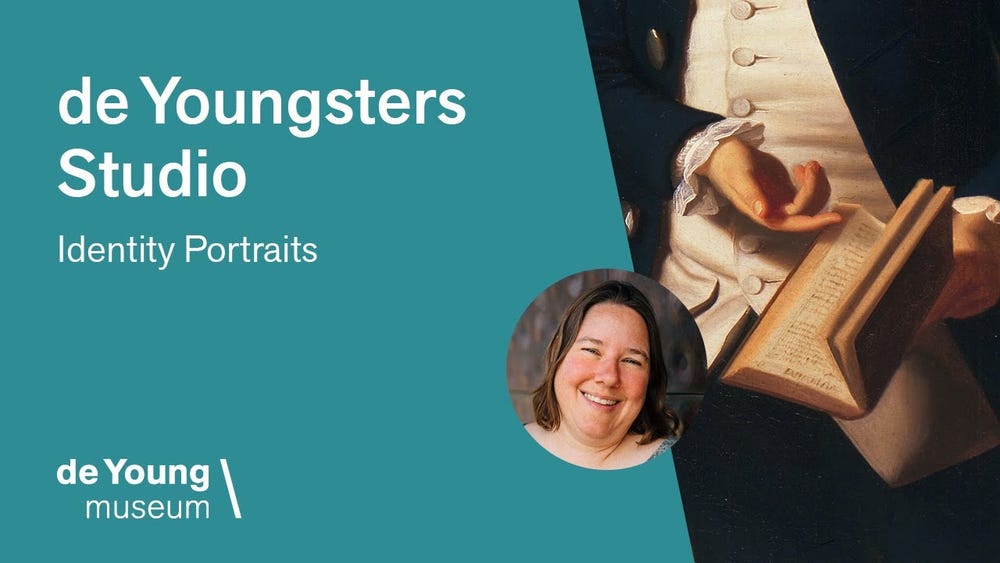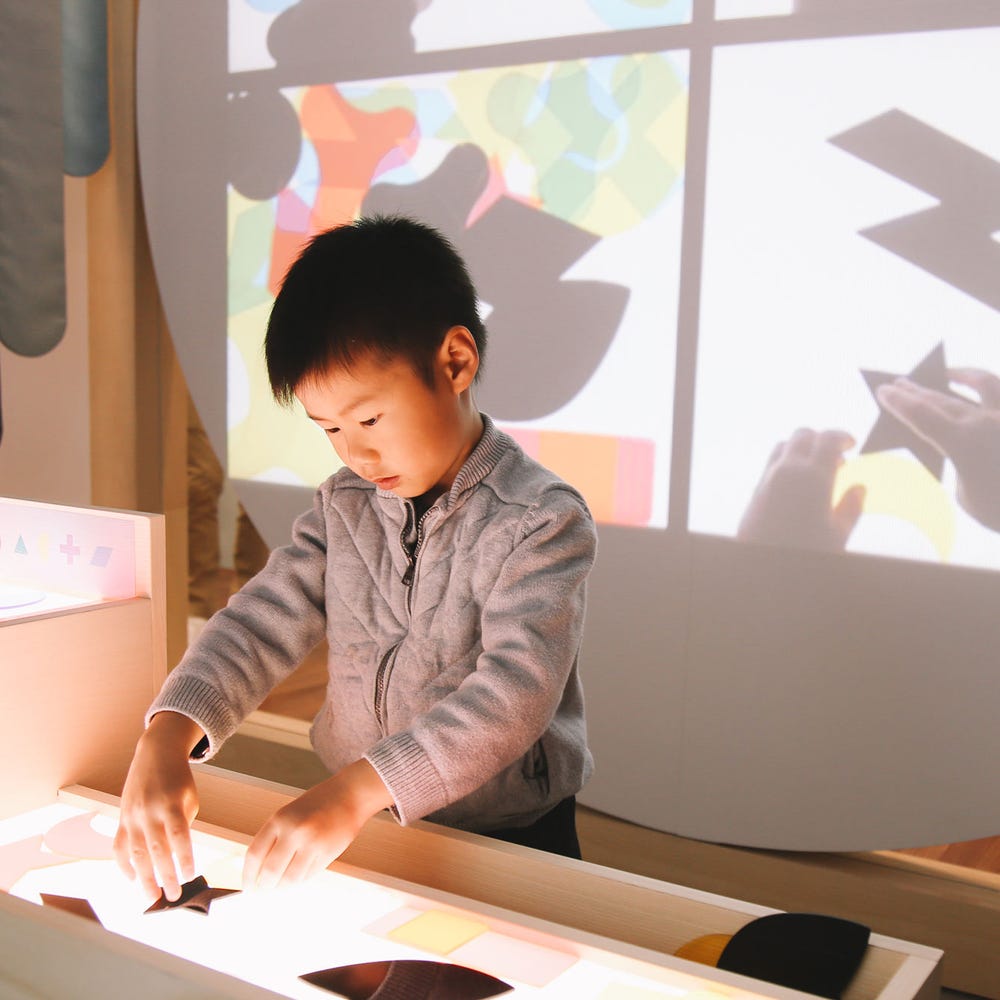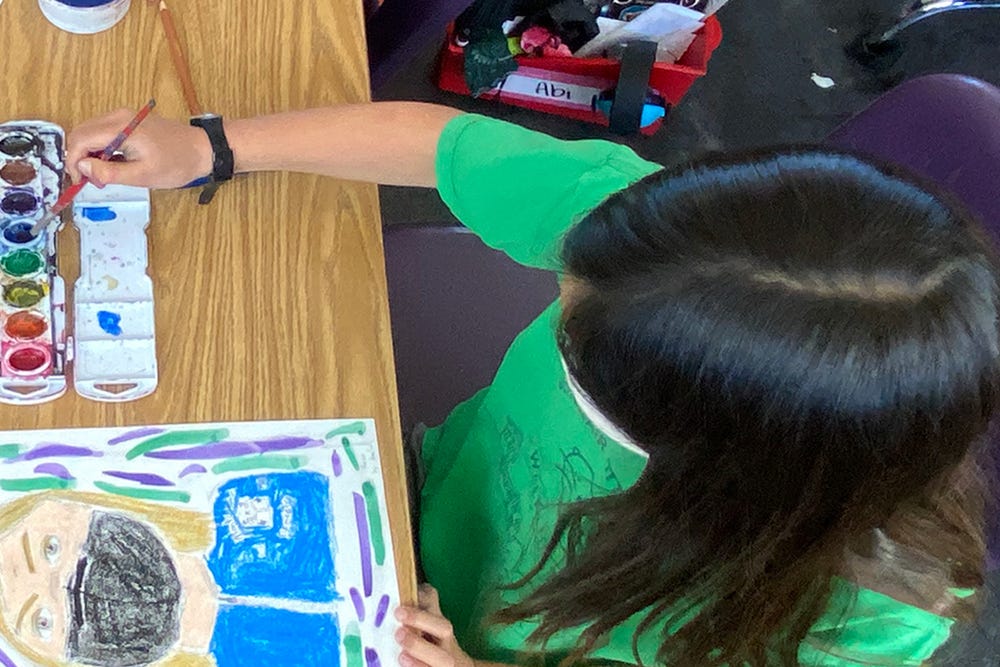de Youngsters Studio: Identity Portraits
By Jill McLennan, senior teaching artist
April 27, 2021
Students explore their personal identity through drawing and writing. Through this activity, inspired by the Freake-Gibbs Painter’s David, Joanna, and Abigail Mason (1670), they create an identity book that looks at their past, present, and future selves. This identity exploration adds a contemporary perspective to our fifth-grade study of portraiture in US colonial history.
Materials
- 2 or 3 sheets of drawing paper, each 8 1/2 x 11 in.
- 3 sheets of construction paper, each 9 x 12 in. (cut to fit as a frame for the drawings)
- Scissors
- Pencil
- Eraser
- Colored pencils
- Mirror
- Glue
- Tape
Questions to Consider
- Past Self: What is an accomplishment or a skill you have learned in your childhood that you are proud of? What symbols can you draw to represent your past self?
- Present Self: Who are you? What is one unique characteristic that you have?
- Future Self: How do you want to be seen as an adult?
Steps
1. Tear 2 or 3 sheets of 8 1/2 x 11 in. drawing paper in half (to 8 1/2 x 5 1/2 in.) and use these to sketch out the following three steps. Set aside the construction paper to make your book at the end.
2. Past Self: With your pencils and eraser, draw symbols and write words on a piece of paper about things that you have done or enjoy doing and that are a part of your personality and skill set, so far. This will represent your past.
Use these sentence starters to begin:
- I am good at ______________________.
- I am proud of ______________________.
- I have learned to __________________.
- Now I can ________________________.
3. Present Self: To represent yourself in the present, let’s draw a blind contour self-portrait, where you look only at the subject you are drawing and not at your paper. Looking in the mirror (don’t peek at your paper!), start in one place and move your eye and pencil around the subject continuously, without lifting up your pencil from the paper. When you have completed drawing your face, you can take a look at what you’ve drawn and write words that stand for who you are around your drawing, using the prompts below:
- What is your name and age? What are your pronouns?
- What languages do you speak?
- What is your race or ethnicity?
- What is one unique characteristic that you have?
4. Future Self: Looking toward our future selves, take some time to think about how you want to be seen as an adult. Let’s draw a self-portrait using a mirror to observe and draw your own features.
First, draw the oval of your head along with light guidelines (use the “Face Map” image as a guide) to help situate your features. Carefully sketch in your eyes, nose, and mouth, while looking in the mirror at the shapes and details that make your face yours. Add hair, ears, neck and shoulders.
Then add some clues to the portrait to show who you will be as a grown-up. You can add details to your clothing, head, and hair, as well as props or symbols around the background. Add words or sentences describing who you hope to be in the future.
5. Now let’s assemble the three drawings into a book. Take one drawing and measure it against one sheet of construction paper. Line up the image, leaving a border of color showing, as a frame. Then cut the construction paper to size and repeat for all three pages. Next, glue each drawing to each frame. Now line up the pages and flip them over to tape on the back.
Reflect
What have you discovered about your identity through this process?
Share
We would love to see what you make too, so please tag us on any social platform using the hashtag #deyoungsters.


